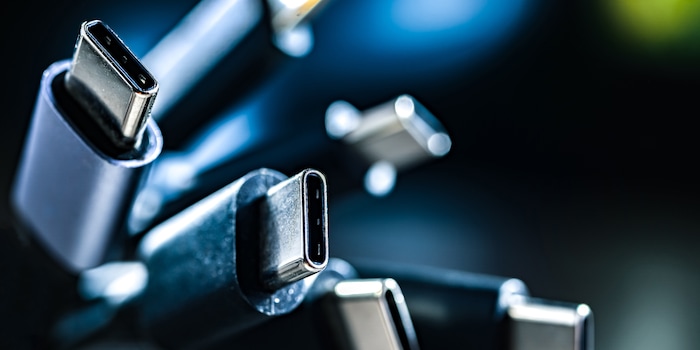
EU significantly expands USB-C obligation
From 2028, all external power supplies in the EU must use USB-C - with detachable cables and greater energy efficiency to reduce electronic waste.
The European Union is tightening the screws further on the topic of standardised chargers. From 2028, all external power supplies sold in the EU must have a USB-C connection. The aim is to eliminate even more proprietary connections, make devices more compatible and reduce electronic waste. At the same time, the EU wants to ensure that power supplies become more energy-efficient, especially in standby mode.
Only separate cables
USB-C has long been mandatory for smartphones, tablets, headphones and other consumer electronics devices. Now the EU is extending the regulation to other power supply units, such as for laptops and other devices in private households or offices. From 2028, new chargers may only come onto the market with a USB-C connection. In addition, manufacturers must affix a standardised EU logo to their products. This indicates that the power supply unit meets the technical and environmental requirements. Furthermore, the power supply unit and cable may no longer consist of a single device. The USB-C cable must be detachable. This should allow defective parts to be replaced separately without having to dispose of the entire charger.
Several thousand tonnes less electronic waste - per year
The new regulation is part of a larger package of measures known as «Common Charger». The EU has already stipulated the USB-C standard for many mobile devices since the end of 2024. The EU is now extending the regulation, which should make it easier to use devices in everyday life.
The only exceptions to the otherwise blanket rule are special medical devices, routers and «devices for wet rooms», such as electric toothbrushes. The EU is still investigating the situation with means of transport, such as e-bikes or scooters. According to EU calculations, this could save several thousand tonnes of e-waste every year. However, the EU has yet to define how the compatibility problems are to be circumvented. USB-C charging systems sometimes use their own protocols, which differ technically despite having the same socket.
The regulation comes into force 20 days after publication and will be applicable after a transitional period of three years.
I've been tinkering with digital networks ever since I found out how to activate both telephone channels on the ISDN card for greater bandwidth. As for the analogue variety, I've been doing that since I learned to talk. Though Winterthur is my adoptive home city, my heart still bleeds red and blue.
From the latest iPhone to the return of 80s fashion. The editorial team will help you make sense of it all.
Show all